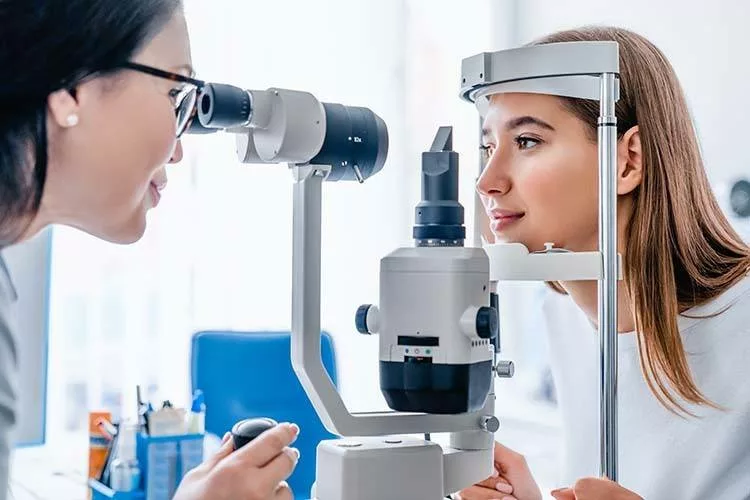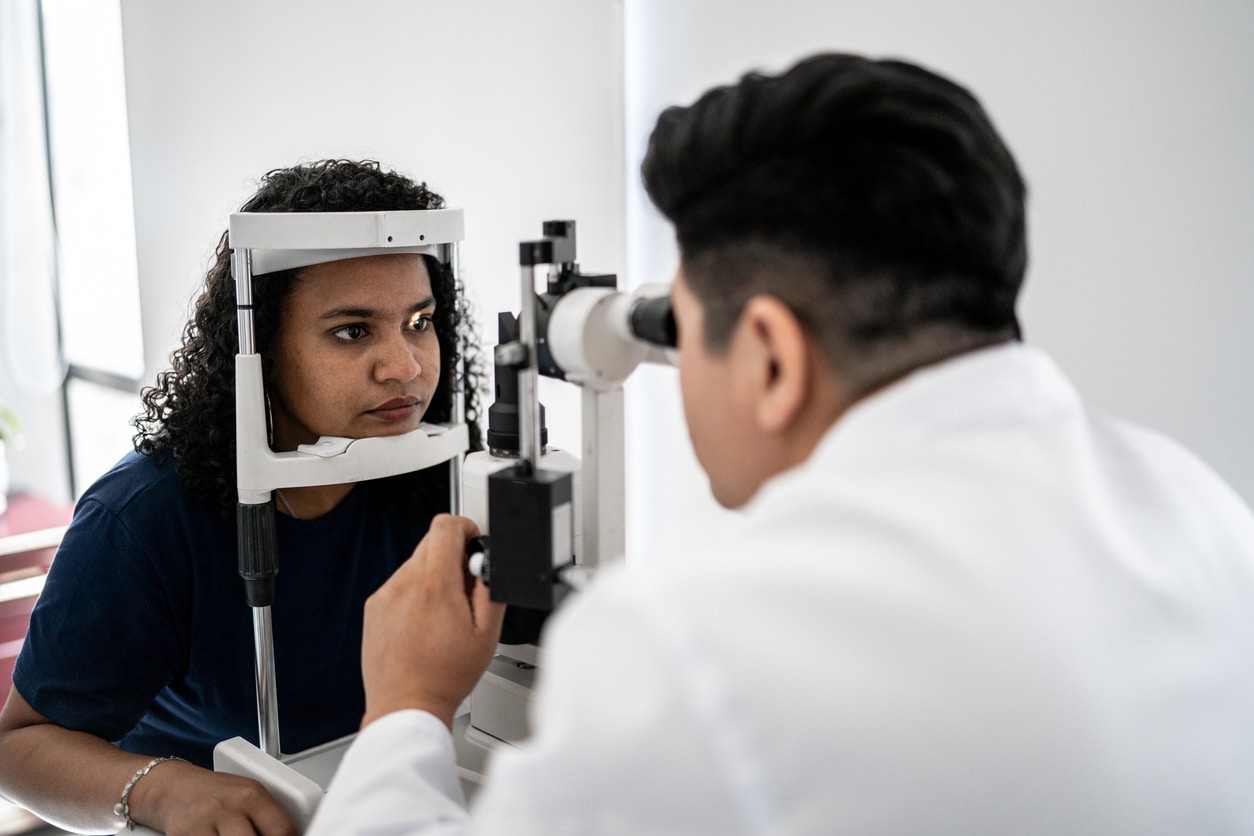Compassionate Eye Doctor: Expert Care for Riverside Residents
Compassionate Eye Doctor: Expert Care for Riverside Residents
Blog Article
The Comprehensive Eye Exam: What to Expect During Your Visit to the Eye Doctor
A visit to the eye doctor for a thorough eye test is more than a routine check-up; it is a vital action in safeguarding your visual health. From the initial conversation of your medical history to the accuracy of the visual skill examination, each component of the test serves a specific purpose. What precisely occurs during the eye health analysis, and exactly how does it influence the prescription process? Understanding these components is important for those who wish to keep ideal vision. As we explore each part, the relevance of follow-up suggestions will also come to be clear.
First Assessment
The initial examination during an eye examination acts as an essential foundation for comprehending a patient's visual health demands. This stage establishes the tone for the entire examination process, permitting the optometrist to gather necessary details concerning the individual's clinical background, way of living, and certain vision issues. By carefully assessing any kind of pre-existing conditions, medicines, or previous surgical treatments, the eye care specialist can tailor the assessment to attend to specific needs properly.

Moreover, the initial consultation is a chance for patients to articulate any type of problems or concerns, fostering a joint relationship with their healthcare supplier. This interaction not just makes sure that the client really feels educated and comfy but likewise encourages them to participate actively in their eye health and wellness monitoring. Jointly, these discussions make it possible for the eye doctor to devise an individualized assessment plan, ensuring ideal care and exact medical diagnosis.
Visual Skill Test
Starting the core parts of an eye exam, the visual acuity test is made to analyze the sharpness and clarity of an individual's vision. This vital examination helps establish how well an individual can determine letters or icons at a standardized range, commonly using a Snellen graph (Eye Doctor). The chart comprises rows of letters that lower in dimension inside out, with the client placed at a popular range of 20 feet
Throughout the test, the person is asked to cover one eye and review out loud the smallest line of letters they can see plainly. This process is repeated for the other eye. The results are videotaped as a fraction, with 20/20 vision indicating typical visual acuity-- where the client can see at 20 feet what a person with normal vision can see at that distance.
The visual acuity test likewise identifies prospective refractive mistakes such as hyperopia, astigmatism, or nearsightedness, which might require restorative lenses. By developing a standard of visual efficiency, the examination is an indispensable analysis device that helps the eye care specialist in developing a proper treatment plan customized to the client's one-of-a-kind visual requirements.
Eye Health And Wellness Assessment
Adhering to the visual skill examination, a comprehensive eye wellness assessment is carried out to guarantee the overall well-being of the eyes. This crucial section of the eye test includes a thorough evaluation of both the exterior and internal structures of the eye. The ophthalmologist or eye doctor begins by click examining the eyelids, cornea, conjunctiva, and sclera for any indicators of infection, swelling, or abnormalities. Utilizing customized tools like a slit light, the practitioner obtains a magnified sight of the eye's makeup, allowing detailed examination.
Next, interest shifts to the inner structures. Through the usage of ophthalmoscopy or fundus digital photography, the retina, optic nerve, and capillary are carefully examined. This action is crucial for determining problems such as retinal detachment, glaucoma, or diabetic retinopathy. In a lot of cases, pupil dilation is carried out to boost exposure of the inner eye frameworks, although this might cause momentary light sensitivity for the client.
Additionally, intraocular pressure is measured to evaluate for glaucoma danger. This is commonly done using tonometry, which can identify raised pressure levels that might suggest possible damage to the optic nerve. Jointly, these assessments form a comprehensive analysis to preserve ocular wellness.
Refraction and Prescription
Refraction is an innovative procedure conducted by eye treatment specialists to figure out the accurate lens power needed to deal with refractive errors such as nearsightedness, astigmatism, hyperopia, and presbyopia. The objective of this treatment is to analyze how light bends as it passes through the eye, allowing the practitioner to determine whether rehabilitative lenses are required for boosted visual acuity.
Throughout the refraction procedure, the person is asked to look via a phoropter, a gadget which contains various lenses. The specialist will methodically change these lenses and ask the person to contrast clearness between options till the most effective feasible vision is achieved. This procedure is crucial in crafting an accurate prescription that specifies the suitable lens power for spectacles or call lenses.
The prescription originated from this procedure not only enhances vision yet likewise acts as a foundation for picking suitable restorative eyeglasses. It is necessary to make certain that prescriptions are consistently updated, as changes in vision can happen over time, stressing the value of routine eye examinations. This precise interest to information assists maintain clear, comfortable vision in day-to-day live.
Follow-Up Referrals

Throughout a follow-up check out, the eye Your Domain Name doctor will certainly perform a series of examinations to evaluate visual acuity and check for any kind of modifications in vision that could require an update to the prescription. Furthermore, the follow-up gives a possibility to discuss any kind of discomfort or concerns experienced with current eyeglasses. Changes can be made to ensure comfort and effectiveness, whether through lens modification or frame adjustments.
For patients with ongoing conditions such as glaucoma, diabetes-related eye problems, or macular degeneration, more frequent follow-ups may be essential. These appointments are essential for handling and possibly reducing the progression of eye disease. Complying with these referrals can dramatically add to keeping visual wellness and stopping long-lasting problems.
Final Thought
The extensive eye test is a vital procedure for keeping visual wellness, encompassing an in-depth evaluation of case history and vision problems. Key components include the aesthetic acuity test, which assesses vision quality, and the eye health and wellness assessment, which examines the total condition of the eyes. Refraction examinations aid establish the exact lens prescription essential for optimal vision correction. Follow-up recommendations supply advice for ongoing eye treatment, ensuring that any kind of prospective concerns are dealt with immediately and properly.
A browse through to the eye physician for a comprehensive eye exam is even more than a routine check-up; it is an essential step in safeguarding your aesthetic health and wellness.Kicking off the core components of an eye assessment, the visual acuity examination is developed to examine the intensity and clearness of a patient's vision.Following the aesthetic acuity examination, an extensive eye health evaluation is conducted to ensure the overall wellness of the eyes. These sees enable the eye care professional to monitor adjustments in vision, upgrade prescriptions, and evaluate the general wellness of the eyes. Key components include the aesthetic acuity test, which reviews vision clarity, and the eye wellness assessment, which analyzes the overall her response condition of the eyes.
Report this page